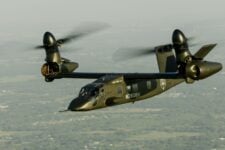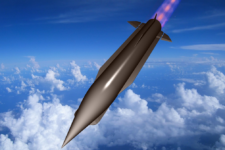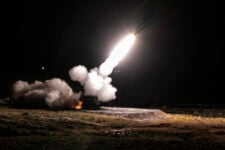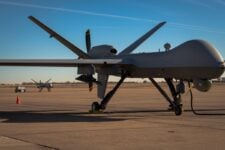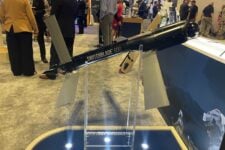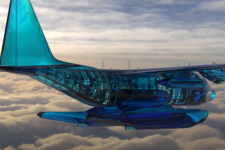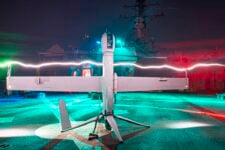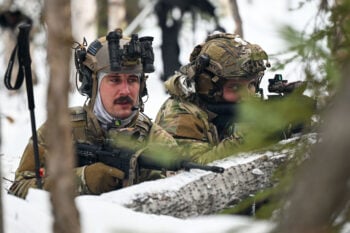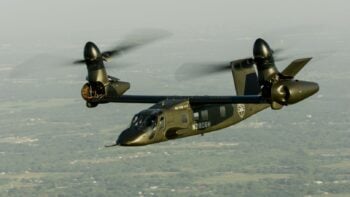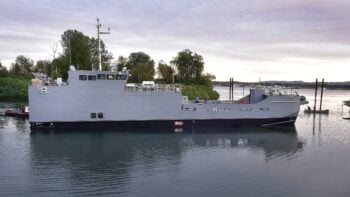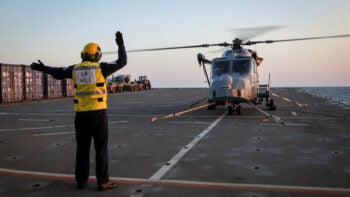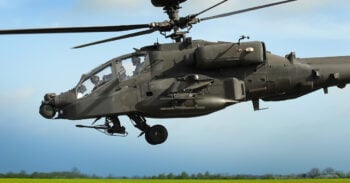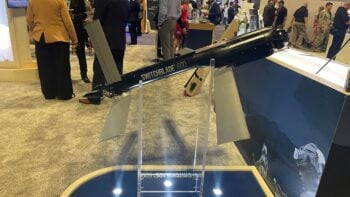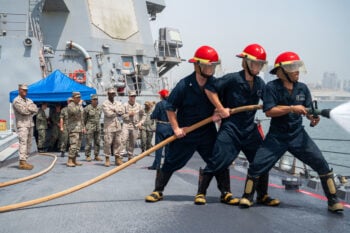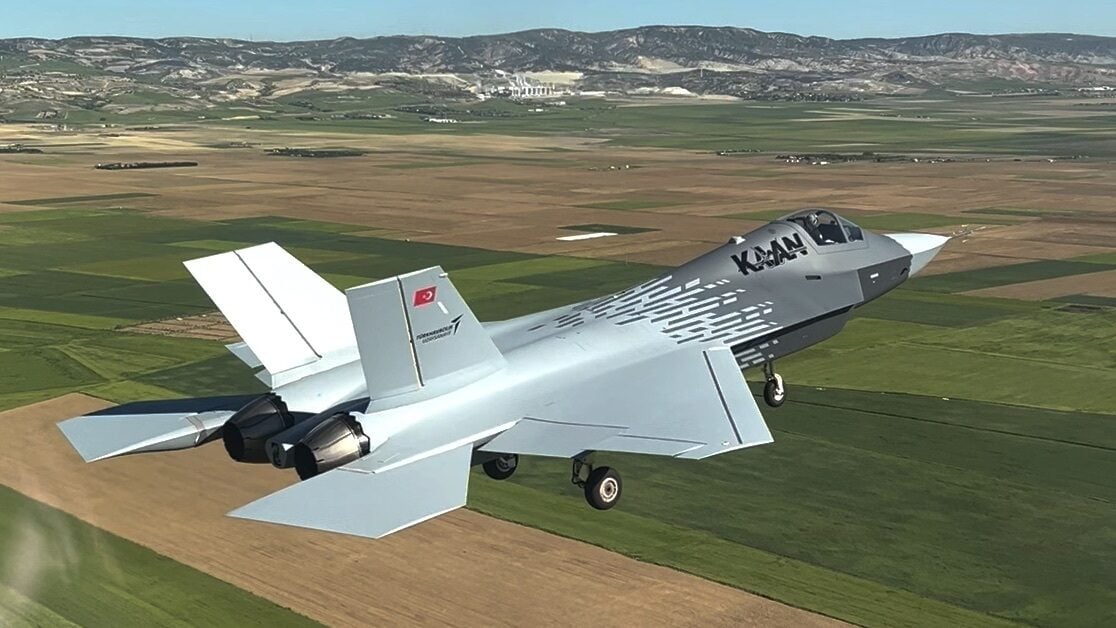
The second flight of the national combat aircraft KAAN, which was initiated by the Turkish Defence Industries Presidency (SSB) in order to meet the combat aircraft requirement of the Turkish Air Forces Command and developed by Turkish Aerospace Industries (TAI), is carried out successfully in Ankara, Turkiye on May 06, 2024. According to the statement made by SSB, KAAN stayed in the air for 14 minutes, reaching an altitude of 10 thousand feet and a speed of 230 knots. (Photo by TUR Defence Industries Presidency/Anadolu via Getty Images)
BEIRUT — Only one week after the second test flight of Turkey’s domestically-produced KAAN fighter, Turkish Aerospace Industries’ general manager has announced that the firm expects to deliver 20 aircraft by 2028 — and is making some big claims about its capabilities.
“This aircraft is better than the F-35,” Temel Kotil said during an event in Ankara, according to the Turkiye Newspaper. “The F-35 carries six tons; this one carries 10 tons of ammunition. It has two engines compared to the F-35’s single engine. Having two engines means more energy and radars illuminating a greater distance.”
Such claims are, clearly, hard to prove, and come with plenty of nationalistic background. Turkey was part of the Lockheed Martin-led F-35 aircraft program and Turkish firms produced parts of the aircraft, but in 2019 the US suspended Turkey’s participation over Ankara’s purchase of the Russian S-400 air defense systems, much to the anger of the Erdogan government.
The expulsion from the F-35 effort has led to a major emphasis on developing and producing the KAAN design, which successfully completed its maiden flight in February 2024.
“We will deliver 20 KAAN aircraft in the year 2028. We’ll deliver many more between 2030 and 2033, and the Turkish fleet will comprise hundreds of KAAN aircraft,” Kotil reportedly said. He added that TAI is also manufacturing the engine and hoped to fly the aircraft with local engines by 2028-2029.
Turkish defense expert and senior fellow at the Hudson Institute, Can Kasapoglu, told Breaking Defense earlier this year that KAAN’s design philosophy has evolved over time.
“KAAN, formerly TF-X, was once planned to be an air-superiority asset. Now it is turning into a multirole aircraft,” Kasapoğlu said.
The challenge facing Turkey with its indigenous defense efforts is cost. Even nations like the US and China seek out defense exports to help defray unit costs, something especially vital for a nation with currency inflation rate like Turkey.
For KAAN, Kasapoğlu said, Turkey will need to be looking for export opportunities in order to keep the unit cost from “skyrocketing.” One early adaptor, at least on paper, has already put its hand up: In July 2023, during a national defense expo, Azerbaijan joined Turkey in its fifth-generation fighter jet program in a move described by Erdogan as a “new sign of solidarity between the two countries.” (Turkey has identified Pakistan as another potential partner.
“Producing all systems is not financially feasible. While Turkiye seeks to make its defence industry sustainable through exports, international cooperation provides another avenue for maintaining this growth. Engaging in international cooperation, however, comes at the expense of autarky, and this trade-off can present very difficult choices,” an IISS report published earlier this month argues.
Army wraps up FLRAA PDR, incorporating special ops design changes
According to a SOCOM official, the Army included feedback from the command that led to design changes like hardware for a refueling probe and features that will enable special operators to make unique modifications.

